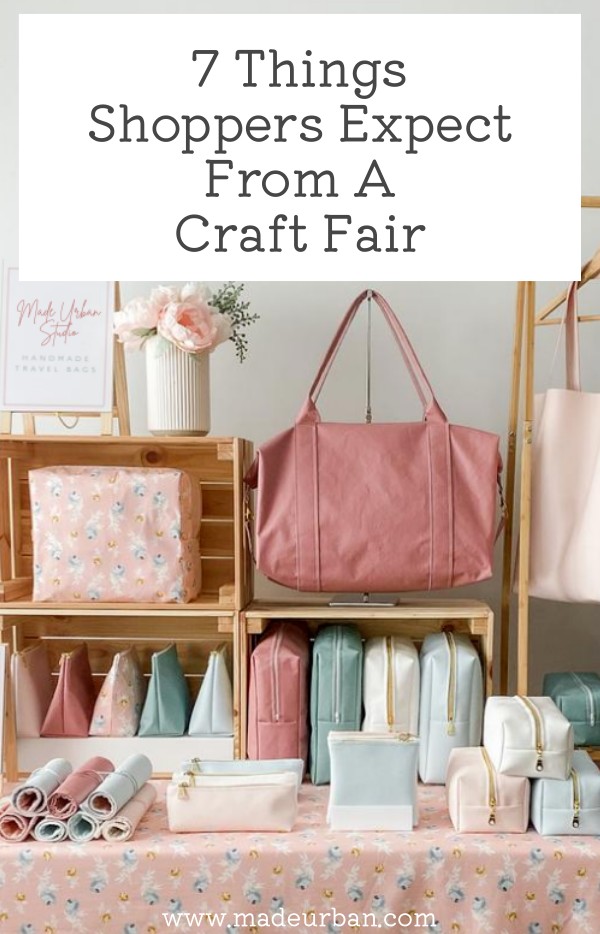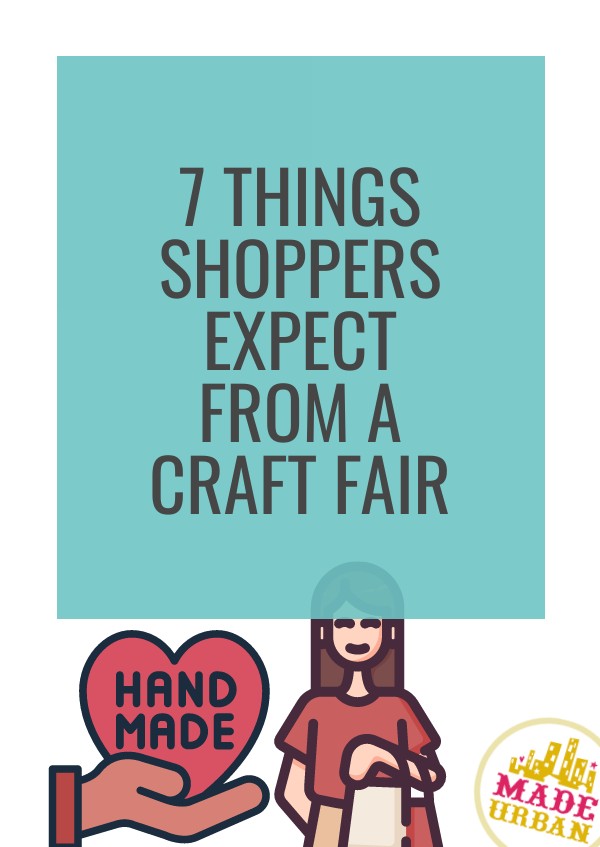7 Things Shoppers Expect from a Craft Fair
When organizing a craft show, it’s important to consider the vendors and shoppers.
The following are the elements craft show shoppers tend to value most.

1) Variety
Although a craft show should have a target market in mind and not try to have something for everyone, within a target market, you should have variety.
When choosing vendors for your event, make sure you have variety when it comes to categories of products (e.g. jewelry, soap, bags, etc.), but also that each vendor offers something new aesthetically.
If every jewelry vendor is selling minimalistic gold jewelry, it’s going to feel repetitive to shoppers.
2) Fresh vendors
Other craft shows can be a great place to find vendors for your event; however, people who shop at craft shows tend to shop at craft shows.
Meaning, they’ve likely attended that same event, and they don’t want to attend a new event that has the exact same vendors.
Try to source new and exciting vendors that aren’t already participating in your city’s popular events.
3) Quality
Handmade items are more expensive than mass-produced items (if vendors are pricing them right). And with those higher price points comes the expectation of high quality.
Be sure to ask for detail photos in each vendor application.
Look for quality finishing, good materials, nice packaging/labelling, etc.
These are the details shoppers will notice too.
4) Price points
When choosing vendors, take a look at their price points.
They should be in line with the level of show you’re producing. Meaning, if you’re trying to organize a high-end event, ensure potential vendors’ price points also communicate “high end”.
But you also want to ensure there are vendors selling products that are a fit for a range of budgets.
If each vendor offers products in a variety of price points (low, medium, high) and collectively, vendors fit within low, medium, and high price ranges, it will ensure everyone can find something to fit their budget.
5) Socializing
Most craft show shoppers want the experience
So you don’t just want to pay attention to what a vendor is selling, but also how they sell it.
You may include a question on your application that asks what a vendor’s selling style is so you can weed out the vendors who don’t think it’s important to socialize with shoppers (e.g. if they state that they mostly like to let shoppers browse on their own, it’s a good sign they won’t be very active when selling).
You can also communicate the importance you put on vendors being present during the event and active (i.e. not sitting behind their table on their phone), so they know what’s expected of them.
6) Payment options
Many people don’t carry cash on them anymore. So it’s important for vendors to accept multiple forms of payment and/or for you to have an ATM on site.
Including a question about what types of payments a vendor accepts can ensure you have flexible vendors who can work with a shopper’s desired way to pay.
7) Comfort
This one is out of the vendor’s control, but is an element you should consider.
Shoppers won’t stick around long if they’re:
- Crowded
- Too hot
- Hungry/thirsty
- Need to use the washroom
When organizing your event, be sure:
- You’re not trying to cram too many vendors into the space, and you’re leaving room in the aisle for crowds of people, strollers, and people who want to stop and chat.
- There is ventilation and the temperature can be controlled so it doesn’t get too hot or too cold.
- There are some options for shoppers to grab a snack and something to drink. Even if it’s simply having a basket of granola bars and a cooler of water bottles at the front.
- There are washrooms close by (and they’re maintained and clean).


Hey, I’m Erin 🙂 I write about small business and craft show techniques I’ve learned from being a small business owner for almost 2 decades, selling at dozens of craft shows, and earning a diploma in Visual Communication Design. I hope you find my advice helpful!
